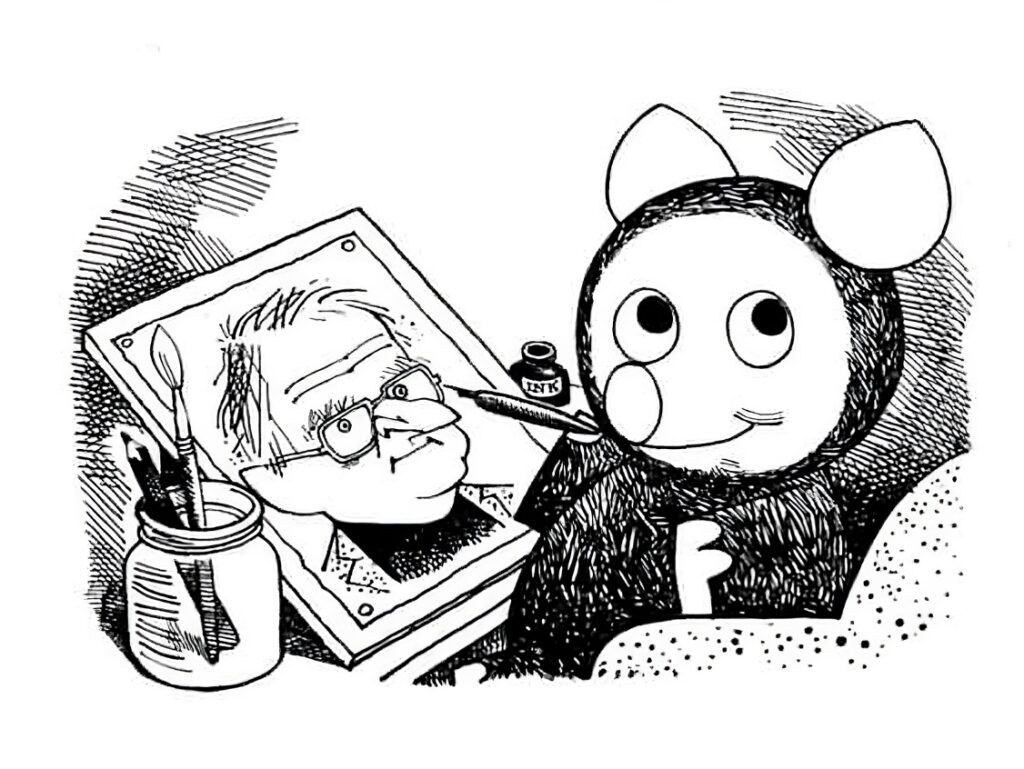
We were sorry to learn of the passing of Canadian-born cartoonist and jazz musician Wally Fawkes , aka “Trog”, best known for his long-running strip, “Flook”, which ran for 35 years, initially at the Daily Mail and then for The Mirror and Sunday Mirror.
His death after a short illness, aged 98, was announced on last week by his family.
Described by caricaturist Adrian Teal as “a great talent, and a lovely fella,” and cartoonist Steve Flanagan as “probably the most brilliant caricaturist of my lifetime,” Wally Fawkes, aka ‘Trog’, once said he specialised in two “minority pursuits” – jazz and cartooning.
“A brilliant cartoonist for Punch, Private Eye, The New Statesman, The Spectator and The Observer, noted cartooonist Nick Newman, “who inspired many of us.”
A talented musician as well as artist, musician and friend George Melly once said he took the name “Trog” from his wartime experiences underground with the Coal Commission, although it is also suggested by others that one of his own early jazz bands was called “The Troglodytes”, and this transferred into his pseudonym.
Born in Vancouver, British Columbia in 1924, Fawkes family moved to Britain in 1931, where he got a scholarship to attend Sidcup School of Art. When World War Two broke out in 1939, he was employed painting camouflage on factory roofs at the Woolwich docks to protect them against bombing. As he later admitted, this did not prove to be a success: “I finished work one Friday, came back on Monday and it had been flattened. It is the harshest criticism of my work I have faced.”

A bout of pleurisy kept Fawkes out of the services, but in 1941 he got a job tracing maps of coal seams for the Coal Commission, then got his artistic break when he entered a Coal Commission art competition, submitting a drawing of a nervous boxer entering the ring, judged by cartoonist Leslie Illingworth, best known for his work for the Daily Mail and chief cartoonist at the long-running British satirical periodical, Punch.
It was Illingworth helped him get a job at the Daily Mail in 1945, aged just 21, drawing column-breakers and decorative illustrations, and a job at the Clement Davies Advertising Agency.
In 1947 Fawkes also began studying one day a week under John Minton at Camberwell School of Art, where he was a contemporary of author, broadcaster, illustrator, composer and journalist Humphrey Lyttelton and Francis Wilford-Smith (better known as the cartoonist, “Smilby”).
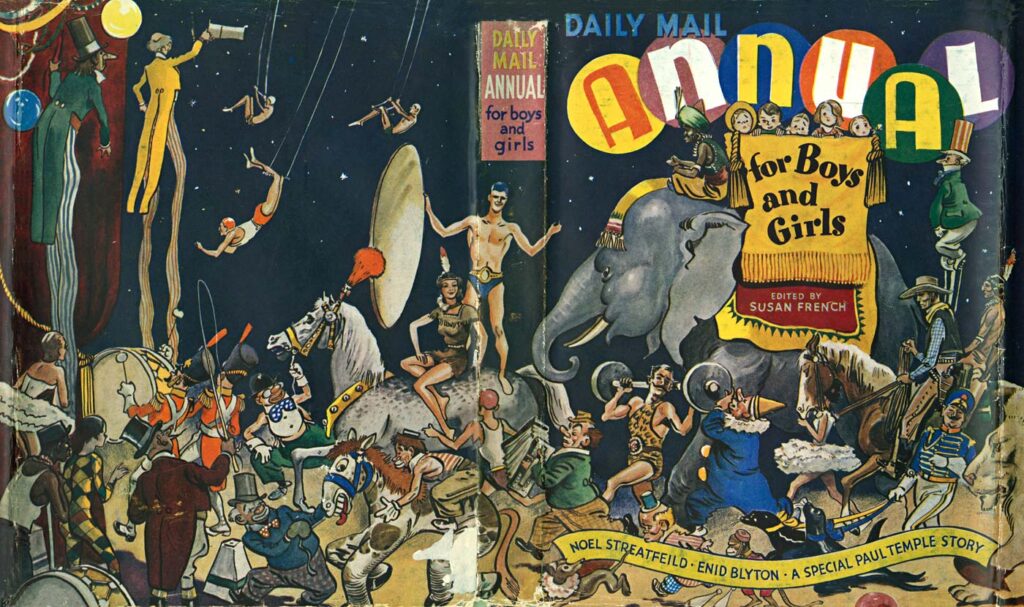
Fawkes would go on to produce cartoons and caricatures for a range of publications including Punch, Private Eye and The Observer for over 60 years, until he gave up cartooning in 2005 because of failing eyesight, aged 81.
He drew the “Flook” cartoon strip for 35 years, initially at the Daily Mail and then for The Mirror and Sunday Mirror. “Flook”, for those unaware, is a tubby, panda-like animal with a short trunk, sawed-off arms and legs, who has the ability to speak seven languages, and has an uncanny faculty for changing himself – or itself – into anything and everything on a moment’s notice.

Accompanied by Rufus, a small boy who was originally the strip’s central character, the “Flook” stumbles into an unending series of far-flung and fantastic adventures.
“Flook” began as a children’s cartoon, initially written by Douglas Mount, the strip provisionally called “Rusty and The Goop”, who had the idea of the little boy and the little animal who fell out of his dream, which was the starting point, followed by Bob Raymond.
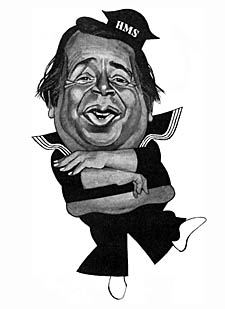
With the arrival of Whisky Galore writer Compton Mackenzie, followed by Humphrey Lyttelton, “Flook” was turned into social and political satire aimed at adults. It was Lyttelton who sharpened up the satirical element, followed by George Melly, who took over the strip in 1956, writing it for 15 years.
First thinking the work would be easy, he was soon dissuaded of the notion, recalling of the experience, “Wally may have appreciated my knowledge of contemporary mores, and my ear for accent and idiom, but if dissatisfied with my contribution he would reject it without a qualm. It was his baby; I only its hired nursemaid. The storyline and its rhythm were his main concern. I would watch his face during our weekly meetings in the art editor’s office. If he smiled – good. If his formidable eyebrows dropped – bad.”
Storylines made frequent allusions to current events and both British as well as international politics, today providing a veritable time capsule of three decades worth of post-war events. The strip grew in popularity, and was quoted in the House of Commons, Prime Minister Harold Macmillan admitting reading the strip before anything else. In 1979, Margaret Thatcher described the strip as “quite the best commentary on the politics of the day”.
By 1957, “Flook” had been adopted as the mascot of 831 Squadron, Fleet Air Arm, and was painted on its aircraft.
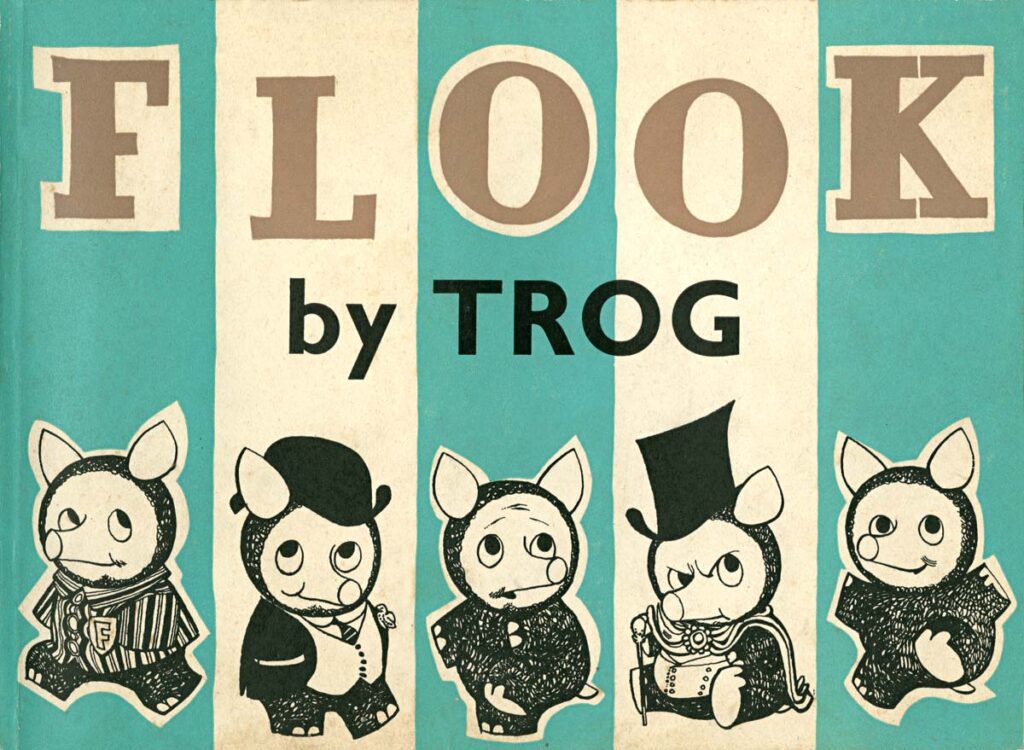
Eric Hobsbawm, writing in London Review of Books in 2010, noted the ironic and bohemian ethos that the strip came to develop was notably at variance with the conservatism of the Daily Mail, which finally discontinued it in July 1984 after some 10,000 episodes, because, according to Fawkes, the then editor, David English objected to its repeated jabs at Margaret Thatcher, and the strip’s covert criticism of the Mail‘s championing of the cause of athlete Zola Budd.
Fawkes was given three months’ notice of the strip’s cancellation, the series ending with Flook erecting a blue plaque reading “FLOOK LIVED HERE 1949 – 1984”, after which Fawkes told English that “at least my friends will speak to me again.”
After it was dropped by the Mail, “Flook” was scripted by Keith Waterhouse, and ran in the Daily Mirror starting from 19th November 1984 until 15th November 1985, before switching to the Sunday Mirror.
Other writers included comedian and script writer Barry Took and film critic Barry Norman, and Fawkes himself.
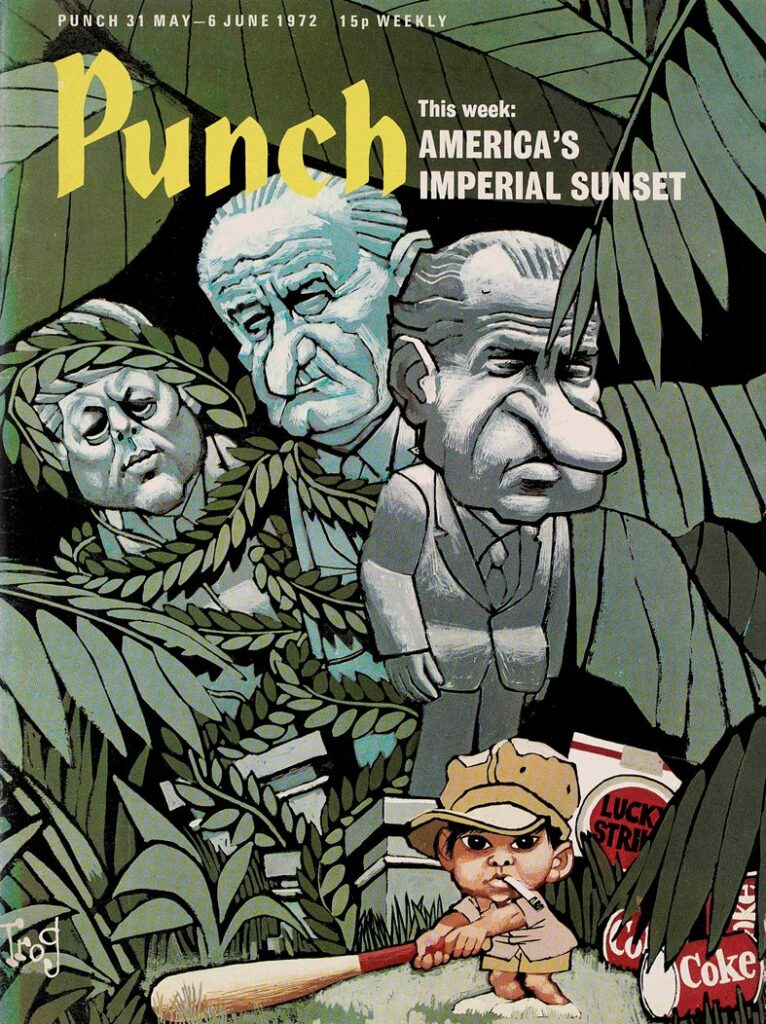

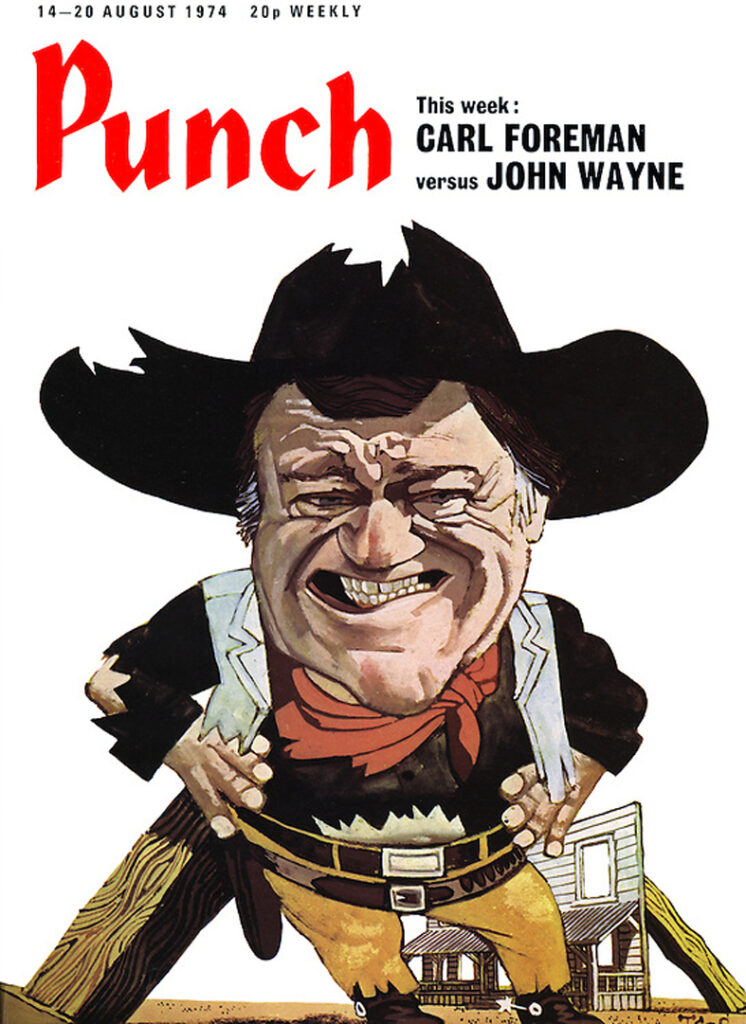
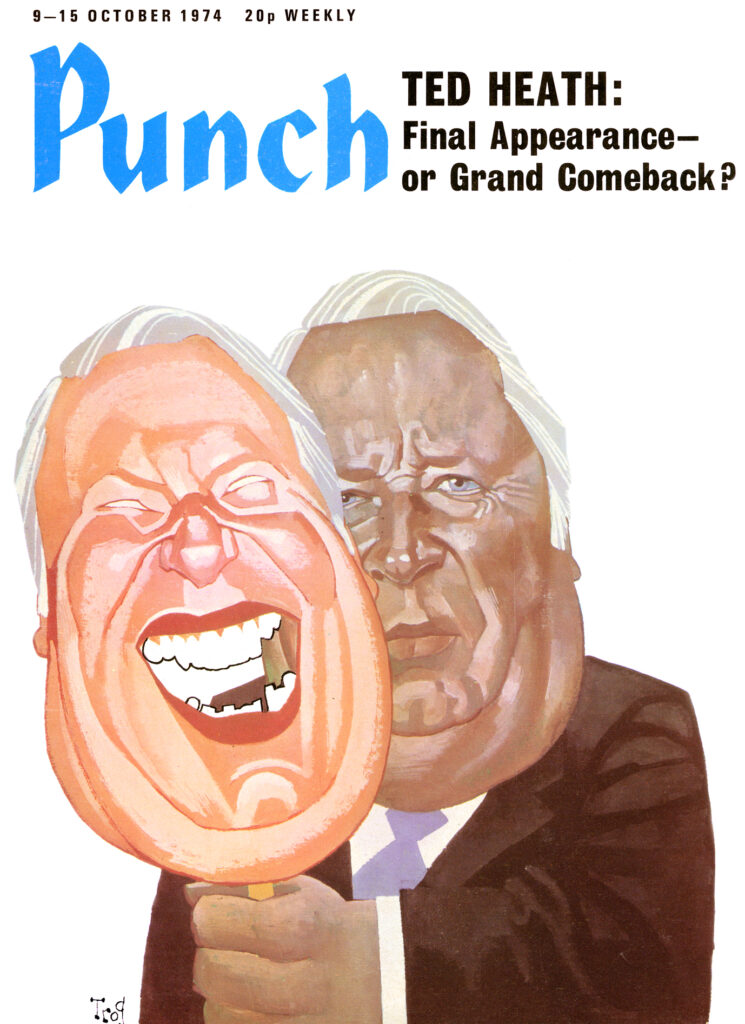
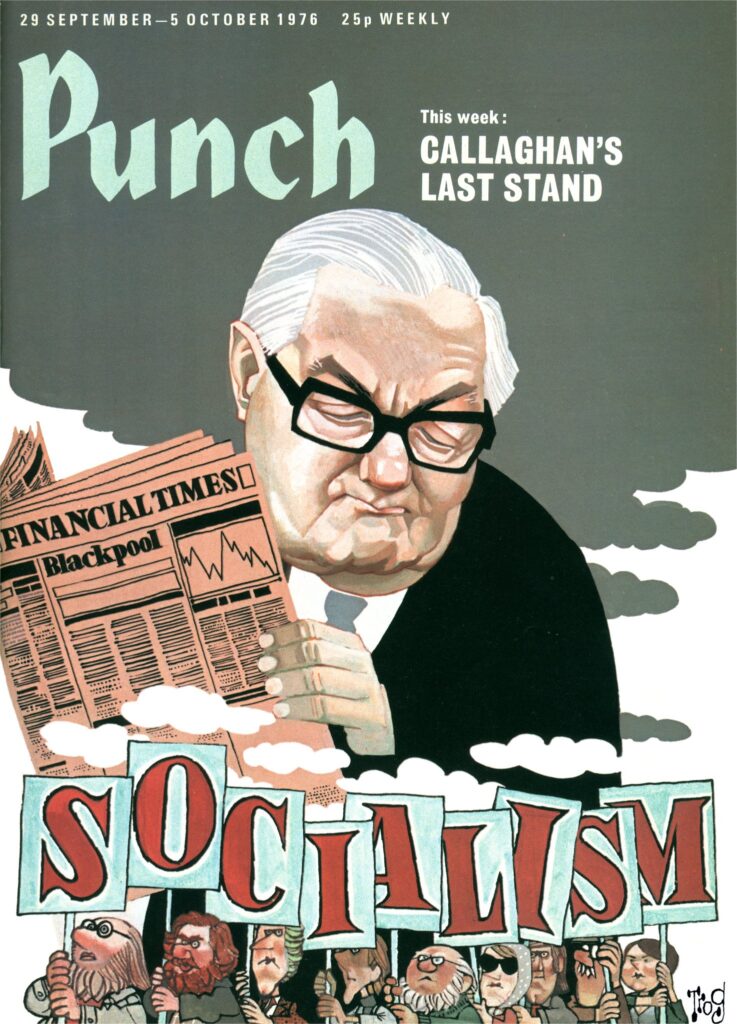
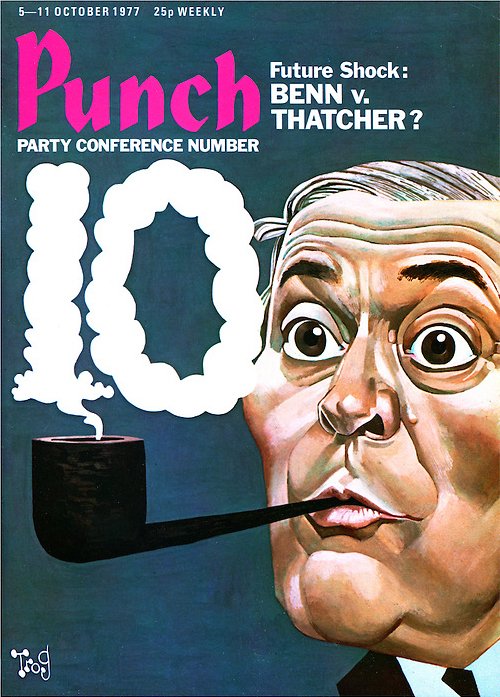
In addition to work for various magazines, including Punch, Fawkes was also political cartoonist for The Observer between 1971 to 1985, drawing both large editorial cartoons and “Mini-Trogs” for the paper’s front page. His time on The Observer was followed by a stint at the Sunday Telegraph until his retirement and he was also the main cartoonist on the London Daily News, which was launched by Robert Maxwell on Tuesday 24th February 1987, the first attempt to produce a 24-hour newspaper in the UK, updated throughout the day.

He was named Political Cartoonist Of The Year in 2004, retiring the following year, but, as the Dan Carrier noted in The Camden New Journal noted, satire’s loss was music’s gain as he picked up his clarinet, in favour of his pen.
Fawkes once quit Humphrey Lyttleton’s jazz band to pursue his career as an artist: but after calling time on a 62-year career at a draughtsman’s board, one of Dartmouth Park’s most famous residents went back to playing his clarinet.
“I will spend my time now searching for the perfect reed,” he said, noting he’d always has a double life, as a virtuoso jazz musician as well as a talented artist.
“To cartoonists, I was always the one who played jazz,” he said. “To musicians, I was always the one who drew cartoons.”
His music took a back seat from 1956 as he established himself as a brilliant artist whose pictures were laced with humour and insight.
Fawkes married journalist Sandy Fawkes in 1949. They had four children, with Johanna, Kate and Jamie surviving. Sadly, a fourth, Sarah, died in infancy, her death attributed to what we would now call Sudden Infant Death Syndrome.
In 1965, Wally married Susan Clifford. They were together for 57 years and had two children, Lucy and Dan.
Commenting on his passing, his daughter Johanna Fawkes, told the PA news agency that her father was “absolutely charming”.
She added: “He was warm, funny and thoughtful. Everybody adored him.”
Our sympathies to family and friends at this time.
Walter Ernest Fawkes, also known as Trog, 21st June 1924 – 1st March 2023
OBITUARIES
• The Guardian – Tribute by George Melly
Tuesday 7th March 2023 – an appreciation written before the muscian’s death in 2007…
“The career of the cartoonist and jazz clarinettist Wally “Trog” Fawkes, who has died aged 98, was an extraordinary one, a mixture of luck and perseverance.”
• The Independent – Cartoonist and jazz musician Wally Fawkes dies aged 98
• The Oldie: RIP the great Oldie cartoonist Wally Fawkes at 98
ONLINE PROFILES
• The Comics Journal: Looking Back at Flook – an interview with Wally Fawkes
By Adam Smith, 11th September 2013
• Wally “Trog” Fawkes – Lambiek
• British Cartoon Archive – Wally ‘Trog’ Fawkes Collection
This collection contains almost 3500 original artworks, 6600 original Flook strips, over 5000 cuttings and even a plastic Flook toy. A previously published profile of Fawkes is archived here on Wayback
• Wally “Trog” Fawkes – Political Cartoon Gallery Profile
• Bear Alley – Comic Firsts: London Daily News
FLOOK BY TROG
• Flook by Trog – Facebook Page
• Trog Leads More Lives Than Does His ‘Flook’
By Erwin Knoll (E&P, 1952)
• Animation Resources – Newspaper Comics: Trog’s Rufus and Flook
Flook Books
Links are to copies where currently available

• The Amazing Adventures of Rufus and Flook (1949)
• Rufus and Flook v. Moses Maggot (1950)
• Rufus and Flook at School (1951)
• Flook (1958)
A collection of three stories
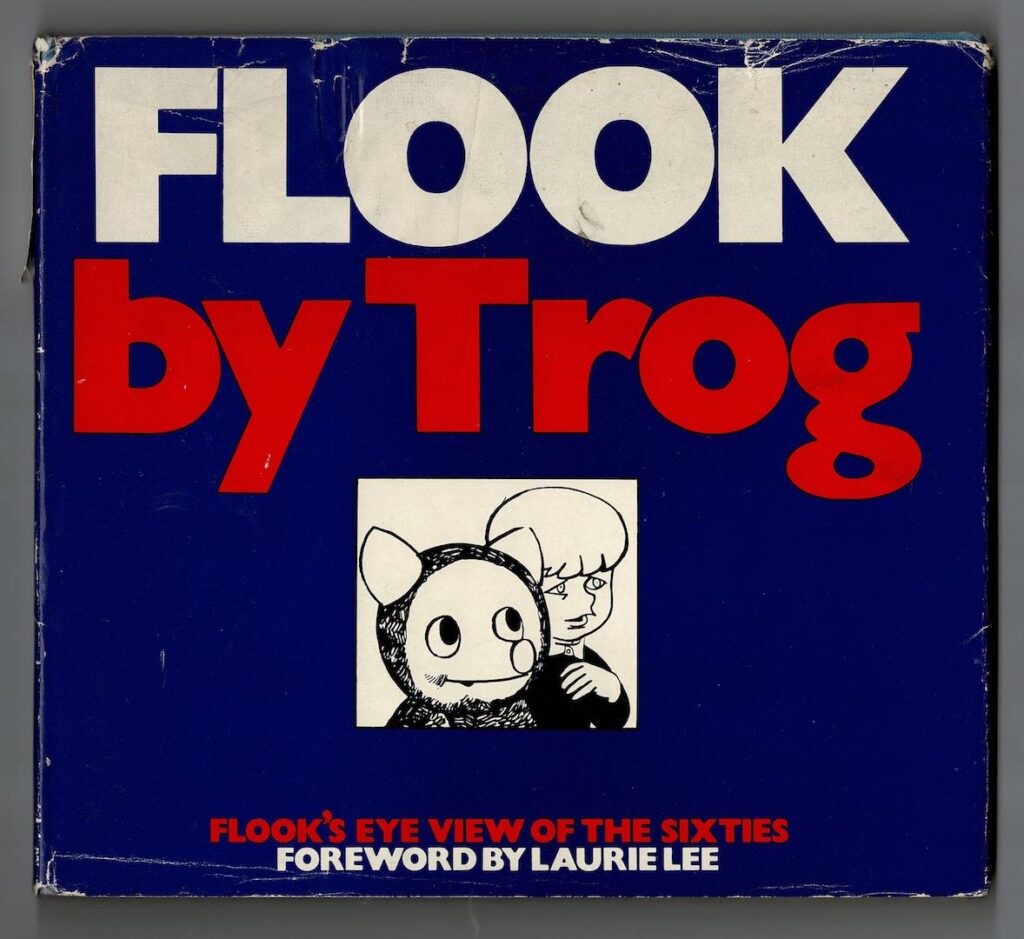
• Flook: Flook’s Eye View of the Sixties (1970)
Introduced by Laurie Lee, a collection of four stories
• Flook and the Peasants’ Revolt (1975)
Written by Barry Took.
Read a short item about this book by the late artist Rod McKie here
• Trog: Forty Graphic Years (1987)
Features one complete “Flook” story)
• I, Flook: An Autobiography (1962)
by George Melly – not a strip collection
• Trog at 30: A Celebration (1979)
Published by the Centre for the Study of Cartoons and Caricature, University of Kent, Canterbury.
A catalogue accompanying an exhibit, with essays by most of the writers of “Flook”
Read a short item about this book by the late artist Rod McKie here
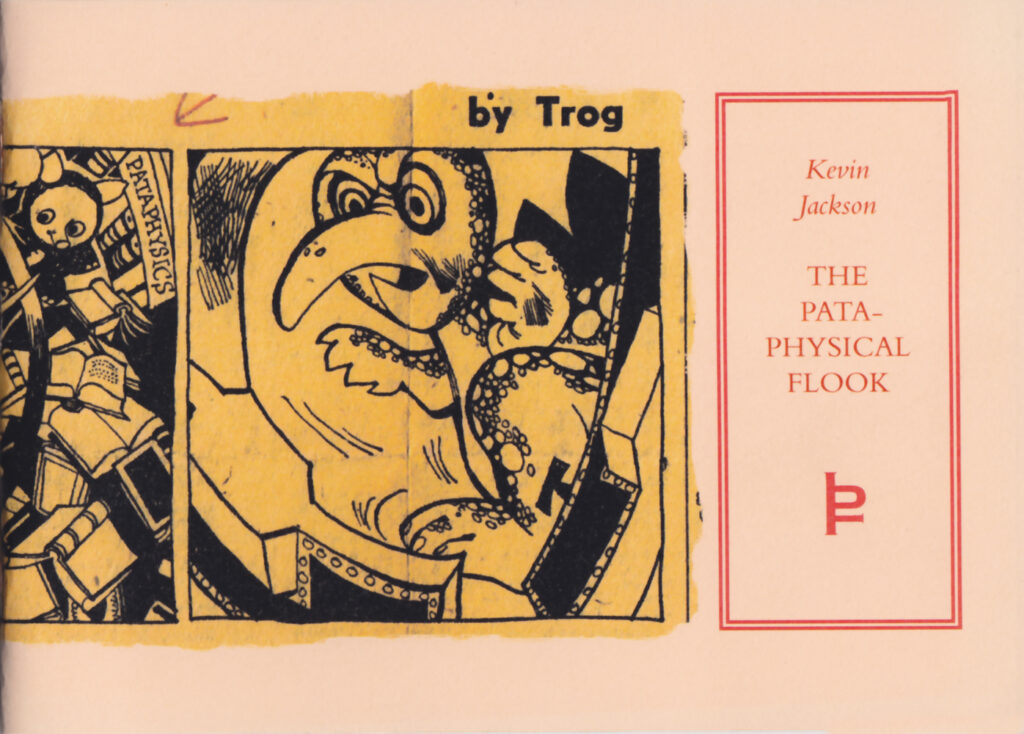
• The Pataphysical Flook (2007)
by Kevin Jackson
An essay about Melly’s references to the works of Alfred Jarry in Flook
George Melly and Wally Fawkes, both jazz musicians, wrote and illustrated “Flook” for 15 years. Melly was a close friend of Simon Watson Taylor, then a Proveditor of the Collège de ’Pataphysique and to entertain him would smuggle references to the Science into this heart of unconsciously pataphysical journalism: a history which is recounted in this booklet.
The London Institute of ’Pataphysics, Departmental Papers DDT4, 199 numbered copies.
• The A to Z of British Newspaper Strips by Paul Hudson is available from Book Palace Books | ISBN: 978-1913548247 | Artists and Writers: Numerous | 320 Pages
MUSIC

• Jazz Journal – Wally Fawkes
Tribute by Matthew Wright, 7th March 2023
• Wally Fawkes And The Troglodytes – Discography
• Flook Digs Jazz is available to stream on AmazonUK
With thanks to Kevin Jon Davies
The founder of downthetubes, which he established in 1998. John works as a comics and magazine editor, writer, and on promotional work for the Lakes International Comic Art Festival. He is currently editor of Star Trek Explorer, published by Titan – his third tour of duty on the title originally titled Star Trek Magazine.
Working in British comics publishing since the 1980s, his credits include editor of titles such as Doctor Who Magazine, Babylon 5 Magazine, and more. He also edited the comics anthology STRIP Magazine and edited several audio comics for ROK Comics. He has also edited several comic collections, including volumes of “Charley’s War” and “Dan Dare”.
He’s the writer of “Pilgrim: Secrets and Lies” for B7 Comics; “Crucible”, a creator-owned project with 2000AD artist Smuzz; and “Death Duty” and “Skow Dogs” with Dave Hailwood.
Categories: Art and Illustration, British Comics, British Comics - Newspaper Strips, Comics, downthetubes Comics News, downthetubes News, Features, Obituaries, Other Worlds
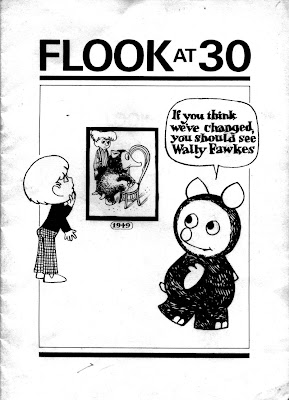
My favourite Flook adventure was the strip which celebrated the Shakespeare Exhibition in the early nineteen sixties. In it, a gay Shakespeare steals the credit for plays written by Young Lord Rufus. Rufus is inspired to write Hamlet by his mother’s marriage to his loutish Uncle Claud (aka Mr Muckybrass in other Flook adventures).